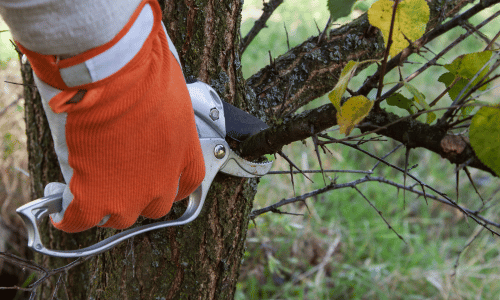As a home service business owner, one of your key responsibilities is to ensure that the surroundings of your clients’ homes are not just aesthetically pleasing, but also safe. An integral part of this involves understanding and properly maintaining the trees around these homes.
Today, I am going to delve into the fascinating world of tree pruning. This might seem like a straightforward task – just grab a pair of shears and chop off some branches, right? However, proper tree pruning requires a more detailed understanding and careful approach. Without it, you risk damaging the tree or even creating a hazardous situation. But don’t worry – by the end of this guide, you will master the art of tree pruning.
Why Prune?
Tree pruning isn’t just about shaping trees for aesthetic purposes. It’s a vital part of tree care with several key benefits.
1. Tree Health: Regular pruning helps maintain the overall health of the tree. By removing dead, dying, or diseased branches, you prevent decay-producing fungi from entering and infecting other areas of the tree.
2. Safety: Overgrown, broken, or dead branches can be a significant hazard, especially during severe weather conditions. Regular pruning ensures these branches do not pose a risk to people, pets, or property.
3. Growth Control: Pruning can control the size and shape of a tree, preventing it from interfering with power lines or becoming a potential hazard.
4. Improved Aesthetics: Properly pruned trees are healthier and more robust, contributing to an overall more beautiful and valuable property.
When to Prune?
The timing of tree pruning can be just as important as the act itself. Pruning at the wrong time can lead to reduced tree vigor, excessive sprouting, and increased vulnerability to various diseases.
1. Late Winter or Early Spring: Pruning when trees are dormant encourages new growth in the spring. However, wait until the coldest part of winter has passed to avoid causing cold injury to the tree.
2. Summer Pruning: This is often done to slow the development of a tree or branch. Since growth is slowed down, it’s also a good time to correct defective limbs.
3. Avoid Fall Pruning: Tree wounds heal slower in the fall, which can increase the risk of disease and decay.
How to Prune?
Now, let’s get into the actual process of tree pruning. As a home service business, you should have a systematic approach to ensure a job well done.
1. Identify the Branch to Be Pruned: Look for branches that are dead, dying, diseased, or broken. Also, identify branches that interfere with structures, block pedestrian or vehicle paths, or create a hazard.
2. Make the Right Cut: Always make pruning cuts just outside the branch collar to facilitate the tree’s natural healing process. Never leave a stub, as this can create an entry point for pests and diseases.
3. Use Proper Tools: Using the right tools not only makes the job easier but also reduces the risk of damage to the tree. Basic tree pruning tools include hand pruners, loppers, pruning saws, and pole pruners.
4. Understand Pruning Techniques: There are different types of pruning cuts and techniques, like thinning, raising, and reduction, each serving a specific purpose. Make sure to use the appropriate one for the situation.
5. Follow the “1/3 and 1/4” Rules of Pruning: Never remove more than 1/4 of a tree’s crown in a season. Also, main side branches should be at least 1/3 smaller than the diameter of the trunk to maintain the tree’s natural shape and structural integrity.
6. Hire Professionals for Large Trees: Pruning large trees can be dangerous and should usually be left to professional arborists. If the tree is near power lines, it’s even more critical to get a professional involved.
Conclusion
Tree pruning is an art that requires knowledge, skill, and practice. As a home service business, mastering this art can significantly enhance the value you provide to your clients. The healthy and well-maintained trees around their homes will not only enhance their curb appeal but also ensure their safety.
Remember, every cut has the potential to change the tree’s growth, so no branch should be removed without a reason. Don’t rush the process – study each tree carefully, make your plan, and then prune.
Armed with this knowledge, you are now ready to tackle tree pruning with a new level of understanding and competence. Remember, a properly pruned tree is a happy tree, and happy trees lead to happy clients!

